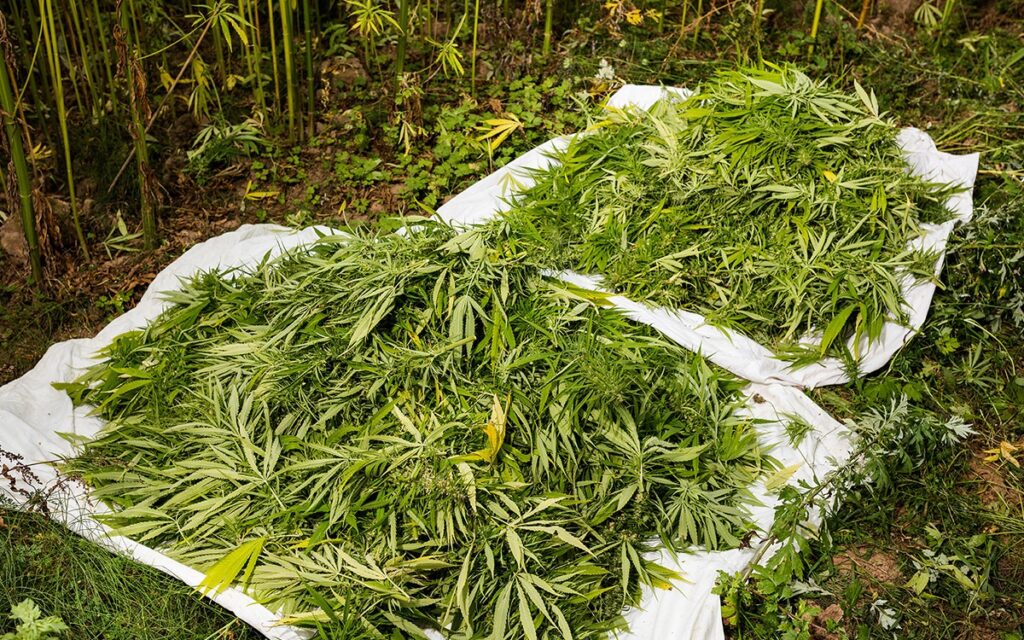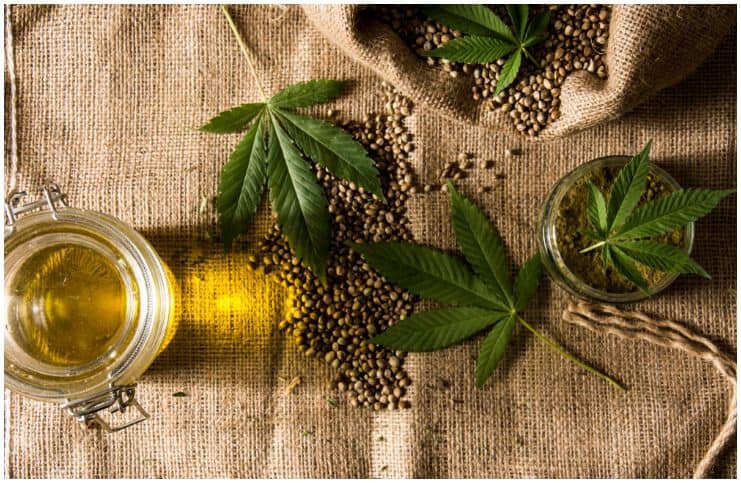The history of hemp is a fascinating journey that spans millennia, weaving through ancient civilizations, industrial revolutions, and modern innovations. This versatile plant, scientifically known as Cannabis sativa, has been a cornerstone of human progress, serving as a resource for textiles, medicine, food, and more. Despite periods of prohibition and misunderstanding, hemp’s resilience and utility have fueled its resurgence in today’s markets, from hemp wholesale to hemp white label products and hemp online commerce. This blog post explores hemp’s storied past and its vibrant revival, grounded in historical facts and modern developments, offering a 1000-word exploration of its enduring legacy.
Ancient Beginnings: Hemp’s Earliest Uses
The history of hemp begins over 10,000 years ago, with evidence of its cultivation dating back to Neolithic China around 8000 BCE. Archaeological finds, such as hemp cord imprints on pottery from the Yangshao culture, suggest it was one of humanity’s earliest domesticated crops. In ancient China, hemp was prized for its fibers, used to craft ropes, textiles, and early paper. By 2700 BCE, Chinese texts like the Shennong Bencaojing documented hemp’s medicinal properties, recommending it for ailments like rheumatism and pain. Hemp seeds were also a dietary staple, valued for their protein and essential fatty acids.
Hemp’s utility spread across Asia, reaching India by 2000 BCE, where it was revered in Vedic texts as a sacred plant, used in rituals and medicines. In ancient Egypt, hemp appeared around 1500 BCE, with traces found in mummies’ wrappings and medical papyri describing its use for inflammation. By 1000 BCE, hemp had reached Europe, where Scythians used its seeds in funerary rituals, as noted by historian Herodotus. These early uses highlight hemp’s global significance, laying the foundation for its role in trade and culture, a legacy that informs today’s hemp wholesale markets.
Medieval Mastery: Hemp’s Global Spread
By the Middle Ages, hemp was a cornerstone of economies across Europe, Asia, and the Middle East. Its fibers were unrivaled for producing durable sails, ropes, and canvas—critical for maritime exploration. In the 9th century, Arab traders introduced hemp to the Islamic world, where it was used for textiles and paper, with Baghdad becoming a hub for hemp-based manuscripts. In Europe, hemp cultivation flourished under Charlemagne’s encouragement, supporting medieval shipbuilding and trade. By the 13th century, Italy’s Venetian Republic relied on hemp for its naval dominance, with fields dedicated to supplying shipyards.
Hemp’s versatility extended beyond textiles. In medieval England, hemp seeds were ground into flour, and its oil fueled lamps. By the 15th century, hemp paper enabled the spread of knowledge, with Gutenberg’s printing press using hemp-based paper for early books. This era’s demand for hemp mirrors modern hemp wholesale trends, where bulk production supports diverse industries. However, hemp’s prominence faced challenges as colonial ambitions and new materials emerged, setting the stage for its complex history in the New World.
Colonial Cornerstone: Hemp in the Americas
Hemp arrived in the Americas with European settlers in the 16th century, becoming a vital crop in colonial economies. In 1619, the Virginia Company mandated hemp cultivation for its settlers, recognizing its value for ropes and sails essential to transatlantic trade. By the 18th century, hemp was a staple in North America, with farmers like George Washington and Thomas Jefferson growing it on their plantations. Jefferson’s writings praised hemp’s productivity, noting that an acre could yield over 500 pounds of fiber.
Hemp’s economic importance extended to Canada and South America, where it supported burgeoning textile and shipping industries. However, its labor-intensive cultivation relied heavily on enslaved labor in the Americas, a dark chapter in its history. Despite this, hemp’s utility was undeniable, with colonial governments often accepting it as currency. This period’s focus on bulk production parallels today’s hemp wholesale markets, where large-scale cultivation meets global demand for sustainable materials.
Prohibition and Decline: Hemp’s Dark Age
The history of hemp took a dramatic turn in the 20th century due to prohibition. In the United States, the 1937 Marihuana Tax Act effectively banned hemp by imposing heavy regulations, conflating it with its psychoactive cousin, marijuana. This was driven by misinformation, political lobbying from competing industries like cotton and synthetic fibers, and racial biases associating cannabis with marginalized groups. By 1970, the Controlled Substances Act classified hemp as a Schedule I drug, halting its cultivation in the U.S.
Globally, similar restrictions emerged, though countries like France and China continued limited hemp production. The decline was stark: in 1900, the U.S. produced 15,000 tons of hemp annually; by 1950, production was nearly nonexistent. This era stifled innovation, but underground advocates preserved hemp’s legacy, setting the stage for its modern revival through hemp white label products and other innovations.
Modern Revival: Hemp’s Renaissance
The late 20th century marked a turning point for hemp, driven by renewed interest in sustainable materials. In 1998, Canada legalized industrial hemp, sparking global interest. The U.S. followed with the 2014 Farm Bill, allowing research-based cultivation, and the 2018 Farm Bill fully legalized hemp by removing it from the Controlled Substances Act. By 2023, U.S. hemp acreage reached 200,000, with a market value exceeding $5 billion, driven by demand for CBD, textiles, and bioplastics.
Hemp’s modern applications are vast. Its fibers are used in eco-friendly clothing, construction materials, and composites for automotive parts. Hemp seeds, rich in omega-3s, fuel a growing food industry, with global sales projected to hit $2 billion by 2027. CBD, derived from hemp, dominates wellness markets, with hemp white label products enabling brands to enter this space without in-house production. Hemp online platforms have democratized access, connecting consumers with products like hemp oil, textiles, and even hempcrete for sustainable building.

Hemp’s Future: Sustainability and Innovation
Today, hemp is at the forefront of sustainable innovation. Its environmental benefits are compelling: hemp sequesters 15 tons of CO2 per hectare, outperforms cotton in water efficiency, and requires minimal pesticides. Industries are leveraging these qualities, with companies like Patagonia using hemp in clothing and BMW incorporating it in car interiors. Hemp wholesale markets are booming, with global trade valued at $1.5 billion in 2024, driven by demand for raw materials and finished goods.
Hemp online marketplaces have transformed commerce, offering everything from bulk fiber to branded hemp white label products. Innovations like hemp-based biofuels and nanocellulose promise further growth, with research suggesting hemp could replace petroleum-based plastics by 2030. Policy shifts continue to support this revival, with the European Union aiming for 500,000 hectares of hemp cultivation by 2030 to meet sustainability goals.
Conclusion: Hemp’s Enduring Legacy
The history of hemp is a testament to human ingenuity and resilience. From ancient China’s textile innovations to medieval Europe’s maritime dominance and today’s sustainable revolution, hemp has shaped civilizations. Its journey through prohibition to revival reflects its adaptability and enduring value. As hemp wholesale markets expand, hemp white label products proliferate, and hemp online platforms thrive, the plant’s future is bright. With its environmental and economic potential, hemp stands poised to redefine industries, proving that this ancient crop is as relevant today as it was 10,000 years ago.
Discover the future of sustainable innovation with NanoHempTechLabs’ premium hemp wholesale products! Rooted in the rich history of hemp, our eco-friendly fibers, seeds, and CBD offerings meet the growing demand for high-quality, sustainable materials. From textiles to wellness products, our versatile range supports industries worldwide, backed by a $5 billion market. NanoHempTechLabs delivers unmatched quality for hemp white label solutions and bulk supplies, perfect for your brand’s success. Join the hemp revolution and elevate your business with our cutting-edge products. Schedule a call today at NanoHempTechLabs.com to explore our wholesale opportunities!
Reference:
- Adesina, I., Bhowmik, A., Sharma, H., & Shahbazi, A. (2020). A review on the current state of knowledge of growing conditions, agronomic soil health practices and utilities of hemp in the united states. Agriculture, 10(4), 129. https://doi.org/10.3390/agriculture10040129
- Amissah, R. (2023). The potential for ghana to become a leader in the african hemp industry. Journal of Cannabis Research, 5(1). https://doi.org/10.1186/s42238-023-00205-9
- Bok, G., Hahm, S., Shin, J., & Park, J. (2023). Optimizing indoor hemp cultivation efficiency through differential day–night temperature treatment. Agronomy, 13(10), 2636. https://doi.org/10.3390/agronomy13102636





